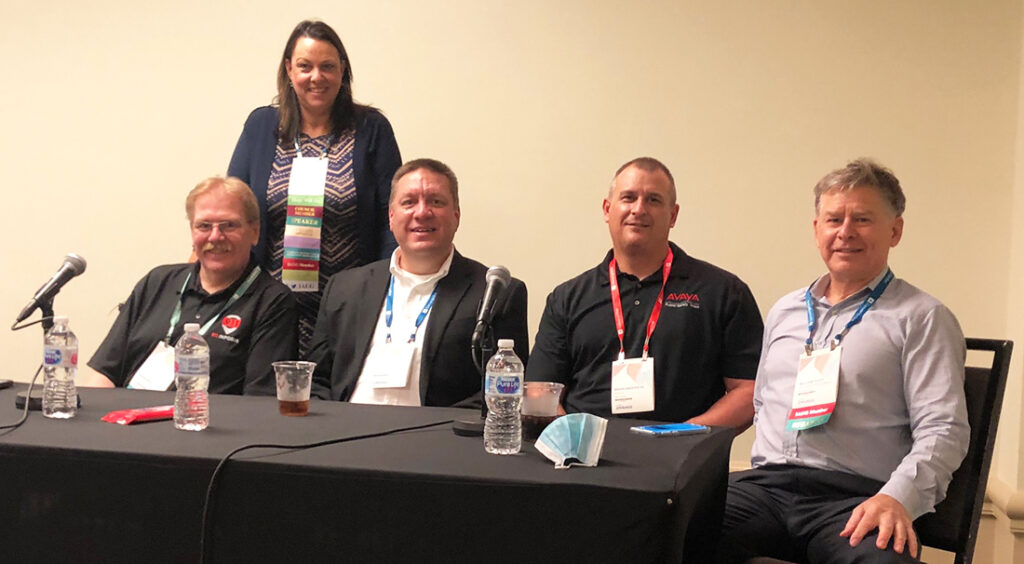
A properly programmed E911 system might have prevented the death of California teenager Jose Manuel Beltran Salas in 2015. When Jose collapsed during PE class, the school’s VoIP telephone system routed the emergency call to a backup emergency communications center in Ontario, Canada. The call was then sent to the city police department’s administrative line, and had to be transferred again to the county’s ambulance service. After the delays, Jose was pronounced dead when he arrived at the medical center and his parents filed a wrongful death lawsuit nine months later.
“It took first responders 11 minutes to get to the high school track because the telecom vendor did not associate data with voice,” said William Svien, president, Vita Safety Partners, at an Avaya ENGAGE 2021 session, “Enterprise E911 is a Hot Topic.” He added, “This is a prime example of how not to do E911.”
In the past three years, the FCC has implemented two statutes – Kari’s Law and Ray Baum’s Act – designed to make it easier for callers to reach emergency communications centers (ECCs) and for first-responders to be dispatched to the right location. Kari’s Law requires direct 911 dialing and notification capabilities in multi-line telephone systems (MLTS), while Ray Baum’s Act requires a “dispatchable location,” such as street address, office suite, or apartment, to be delivered with the call.
“This new FCC legislation is now an integral part of an emergency management response and ecosystem,” said Melinda Sensabaugh, VP, Vita Safety Partners, who moderated the session in advance of a January 6, 2022 compliance deadline for some MLTS operators. As a result, the ENGAGE session was very timely for IT professionals with questions about the two federal statutes.
Referring to Jose’s story and his own experience as an E911 advisor, Mark Fletcher, VP, NG911, said the message for telecom professionals is clear: “Don’t get lazy.”
Do older PBX systems need to comply?
Asked whether the FCC’s MLTS regulations apply to older PBX systems, Robin Erkkila, 911 solutions engineer, Bandwidth Inc., gave a nuanced response. “Technically, any system put in place prior to 2020 does not fall under the law,” he said. “But if your system can be configured to adhere to the law, you should absolutely do it. That will be very important in mitigating the risk of a potential lawsuit.”
Fletcher agreed, adding, “Even an old Nortel system from the early 2000s is more than capable of being programmed for E911. If you don’t do so, you are making a choice.” Cloud-based contact center providers also need that capability so organizations can deliver E911 support to their employees, added Svien.
As for teleworkers, Erkkila said a best practice is to allow end users to provision their home addresses. “But you need to prompt your users to do that, he added, noting that users who move from place to place can self-report their locations.
What About NG911?
In response to the federal requirements, many local ECCs are rolling out next generation NG911 networks that can add location data to emergency voice calls. “Information for dispatchable locations is provided in the header of a call pushed to the network, along with routing instructions to the right PSAP,” said Svien. “It adds situational awareness for first responders.”
For enterprises, NG911 is all about providing contextual data for first responders, said Brian Anderson, director of public safety solutions, Avaya. “They don’t know your campus or building and need a map or floorplan,” he said. “If they get a call from a second-floor restroom, you need to be able to direct them to the location.”
Anderson said every organization’s situation is different. In a campus setting, for instance, in-house security personnel could meet first responders at the front gate and escort them to where a person needs emergency help. “The goal is to have first responders find that person in a reasonable amount of time,” he said.
While some organizations are concerned about having to upgrade their E911 systems twice, as NG911 becomes a standard, Sensabaugh encouraged professionals to “do the right thing now.”
Fletcher agreed. “Even if your ECC is not yet deploying NG911, there is no reason to delay upgrading to the next technology,” he said. “Then you’re all set for whenever your locality implements NG911.”
